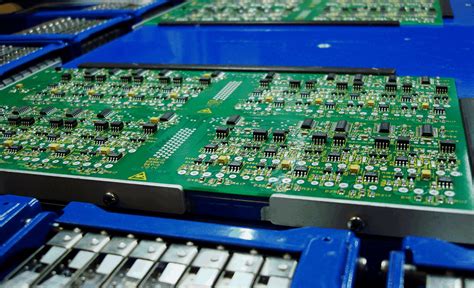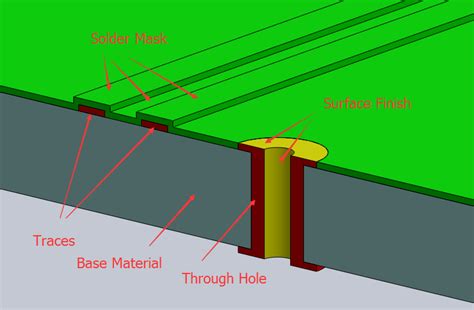Streamline PCB Prototype Orders: Fast-Track Process Guide
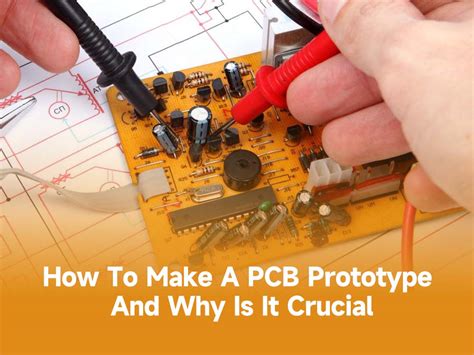
Key Takeaways
Understanding core principles in PCB manufacturing can significantly reduce development cycles while maintaining quality. When working with PCB manufacturing companies, prioritize suppliers offering real-time quoting engines and automated design validation—these tools eliminate back-and-forth communication, cutting approval times by up to 70%. For instance, platforms like Andwin PCBA integrate instant feedback systems that flag potential fabrication issues during file upload, ensuring your design meets tolerance thresholds before production begins.
To minimize PCB manufacturing cost, adopt these strategies:
| Cost Factor | Optimization Tip |
|---|---|
| Layer Count | Use 4-layer boards unless high-speed signals demand more |
| Material Choice | FR-4 substrates balance performance and affordability |
| Panelization | Maximize panel space utilization (≥85%) |
Efficient PCB manufacturing business operations rely on standardized file preparation. Always provide:
- Gerber files in RS-274X format
- IPC-356 netlists for electrical testing
- A 3D STEP model for mechanical validation
Automated tracking systems offered by advanced manufacturers provide live updates on etching, drilling, and plating stages—critical for hitting 24-hour turnaround targets. Avoid delays by pre-validating designs against your supplier’s capability matrix, which details minimum trace widths and via sizes. By aligning your workflow with these protocols, you’ll transform prototype ordering from a bottleneck into a competitive advantage.
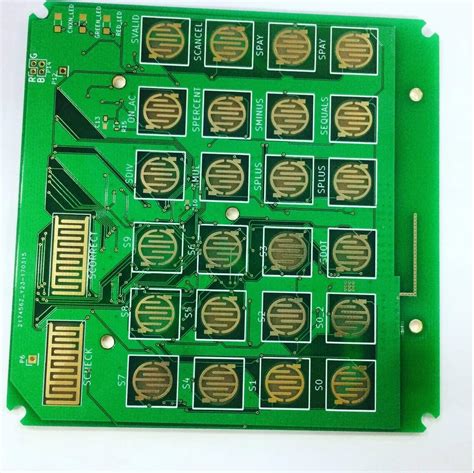
Fast-Track PCB Prototype Ordering
Navigating PCB manufacturing requires precision and strategic planning to avoid bottlenecks. Start by selecting PCB manufacturing companies with proven expertise in rapid prototyping. These partners often offer dedicated engineering support to refine your design files, ensuring compliance with fabrication standards before submission—a critical step to prevent costly revisions.
To minimize PCB manufacturing cost, optimize material choices and panelization early in the design phase. For instance, specifying standard FR-4 substrates and avoiding oversized boards can reduce material waste. Many manufacturers provide instant quoting tools that analyze Gerber files in real time, giving you immediate visibility into cost drivers. Pair this with bulk-order discounts or shared-panel services if your project allows.
When preparing files, adhere strictly to your manufacturer’s guidelines. Layer naming conventions, drill charts, and copper weight specifications must align with their requirements. Automated Design Rule Checks (DRC) in software like Altium or KiCad can flag errors that might delay production. Remember, even minor oversights—like missing solder mask clearances—can add days to turnaround times.
For approval workflows, leverage digital platforms that centralize communication. Modern PCB manufacturing business portals allow you to track revisions, approve quotes, and confirm orders in a single interface. This eliminates back-and-forth emails and ensures all stakeholders stay aligned.
Finally, integrate automated tracking systems offered by your manufacturer. These tools provide real-time updates on fabrication milestones, from material procurement to electrical testing. By syncing this data with your project management software, you maintain full visibility over timelines and can adjust development cycles proactively.
Adopting these practices positions you to capitalize on 24-hour turnaround services while maintaining control over PCB manufacturing cost and quality.
24-Hour PCB Turnaround Strategies
Achieving a 24-hour PCB turnaround requires aligning your design workflow with the operational capabilities of PCB manufacturing companies. Start by selecting vendors with proven expertise in rapid prototyping—look for automated quoting systems and tiered service levels explicitly designed for expedited orders. When submitting files, ensure your PCB manufacturing package includes industry-standard Gerber files, a fully populated bill of materials (BOM), and a layer stack-up that matches the fabricator’s pre-approved templates.
Tip: Pre-validate your design files using the manufacturer’s online DFM (Design for Manufacturability) checker to eliminate time-consuming revisions.
PCB manufacturing cost optimization plays a critical role in fast-track orders. Prioritize panelization efficiency—designs that maximize board space utilization reduce material waste and enable quicker batch processing. For complex layouts, consider splitting multilayer boards into smaller batches to leverage parallel production lines.
To avoid delays, verify that your PCB manufacturing business partner maintains real-time inventory for common materials like FR-4 substrates and HASL finishes. Automated order tracking systems, integrated directly into the manufacturer’s platform, allow you to monitor production milestones (e.g., drilling, plating, testing) and receive instant alerts for potential bottlenecks.
“A single missing solder mask definition can add 12+ hours to your timeline. Always cross-verify silkscreen layers and copper pours before submission.”
Finally, negotiate flexible shipping terms upfront. Couriers like DHL or FedEx offer prioritized logistics slots for urgent electronics shipments, but routing decisions must align with the fabricator’s dispatch schedule. By synchronizing these elements, you transform PCB manufacturing from a sequential process into a concurrent engineering effort—compressing timelines without compromising quality.
Optimize PCB File Preparation Steps
Effective PCB file preparation forms the cornerstone of successful pcb manufacturing, directly impacting both turnaround time and pcb manufacturing cost. Start by verifying design files against your chosen manufacturer’s specifications—overlooking this step often leads to avoidable revisions. Most pcb manufacturing companies require Gerber files (RS-274X format), drill files (Excellon format), and a bill of materials (BOM) with clear component designators. Use automated design rule checks (DRC) to flag issues like insufficient trace spacing or missing solder masks before submission.
When preparing multilayer designs, include a detailed layer stackup diagram to eliminate ambiguity. This ensures manufacturers replicate your intended material selection and impedance requirements accurately, reducing the risk of costly respins. For pcb manufacturing business partnerships prioritizing speed, provide panelization preferences upfront—either in your files or as explicit instructions—to bypass back-and-forth clarifications.
Optimize file naming conventions (e.g., "TopLayer_Cu.gbr") to simplify processing. Mislabeled files delay order approval, negating the benefits of 24-hour turnaround services. If your design includes non-standard features like blind vias or HDI structures, attach a concise technical note explaining requirements. This proactive approach helps manufacturers align their processes with your expectations, minimizing pcb manufacturing cost spikes from unforeseen complexities.
Finally, cross-validate files using a free Gerber viewer tool. A quick visual inspection catches mismatches between your CAD output and what manufacturers receive—saving days in revision cycles. By refining these steps, you transform file preparation from a bottleneck into a strategic advantage, ensuring seamless progression to quoting and production phases.
Cost-Effective PCB Quoting Methods
To minimize PCB manufacturing cost without compromising quality, start by optimizing your design for standardized production parameters. Many PCB manufacturing companies offer tiered pricing based on panel utilization, material choices, and layer counts. Use design rule checks (DRC) to eliminate features that escalate costs, such as ultra-fine traces or non-standard hole sizes, unless absolutely necessary for functionality.
When requesting quotes, provide complete Gerber files and a detailed bill of materials (BOM) to avoid back-and-forth clarifications. Reputable PCB manufacturing business providers often leverage automated quoting systems that analyze design complexity in real time, enabling you to compare multiple vendors efficiently. For prototypes, consider pooling services where multiple designs share panel space—this can reduce per-unit expenses by up to 40%.
Another strategy involves negotiating volume-based discounts early in the PCB manufacturing process. If your project requires iterative testing, inquire about batch pricing for 3-5 prototype revisions upfront. Additionally, prioritize manufacturers offering free engineering reviews—their feedback might reveal cost-saving opportunities like substituting high-frequency materials with FR-4 alternatives for non-critical layers.
Always verify if the quoted PCB manufacturing cost includes ancillary fees for certifications, testing, or expedited shipping. Transparent vendors break down these components, allowing you to trim non-essential services. For long-term partnerships, explore contractual agreements that lock in favorable rates for future orders, balancing immediate prototype expenses with scaled production budgets.
Streamline PCB Order Approval Workflows
Efficient approval processes are critical when working with PCB manufacturing companies, as delays in internal sign-offs can derail project timelines. Start by establishing standardized review checklists that align with your vendor’s requirements—this reduces back-and-forth clarifications. For example, including Gerber file validation and design-for-manufacturability (DFM) checks in your internal workflow ensures files meet production criteria before submission, minimizing revision cycles.
Leverage automated tools to synchronize approval workflows with your PCB manufacturing partner’s systems. Many providers offer API integrations that connect enterprise resource planning (ERP) platforms directly to their order portals, enabling real-time status updates and instant feedback on design issues. This integration not only accelerates approvals but also reduces manual data entry errors that could inflate PCB manufacturing costs.
To further optimize, designate cross-functional stakeholders (e.g., engineering, procurement) with clear decision-making authority at each stage. Use collaborative platforms like Slack or Microsoft Teams to centralize communication, ensuring prompt responses to quote adjustments or material change requests. For recurring projects, pre-negotiate terms with your PCB manufacturing business partner—such as blanket purchase agreements—to bypass repetitive contract reviews.
Finally, implement a tiered approval system for budget thresholds. Low-cost prototypes might require only engineering sign-off, while high-volume orders trigger financial oversight. This balances speed with cost control, preventing bottlenecks while maintaining accountability. By refining these workflows, you’ll unlock faster turnaround times without compromising on quality or budgetary guardrails.
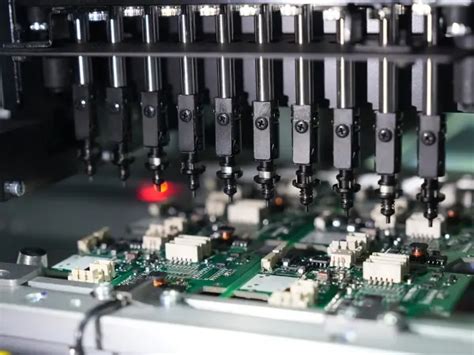
Automated PCB Order Tracking Systems
Modern PCB manufacturing companies leverage automated tracking systems to provide real-time visibility into prototype orders, transforming how you manage production timelines. These platforms integrate with PCB manufacturing workflows, allowing you to monitor progress from design validation to shipping—without manual follow-ups. By centralizing communication and status updates, automated tools eliminate guesswork, ensuring you’re alerted immediately if design files require adjustments or materials face delays.
Key features like customizable dashboards and automated notifications align with PCB manufacturing cost optimization goals. For example, instant alerts about material shortages let you approve alternatives swiftly, preventing bottlenecks. Some systems even predict potential delays by analyzing historical data from your PCB manufacturing business, enabling proactive adjustments to meet tight deadlines.
Integrating these tools with existing design software further streamlines operations. When your Gerber files pass automated Design for Manufacturability (DFM) checks, the system triggers order confirmation and provides an estimated completion timeline. This seamless handoff reduces approval cycles by up to 40%, critical for maintaining 24-hour turnaround promises.
For teams managing multiple prototypes, granular tracking at the batch or component level ensures accountability. You can pinpoint which stage each order occupies—whether in etching, drilling, or testing—and share live updates with stakeholders. This transparency builds trust with PCB manufacturing companies while reducing administrative overhead.
Finally, data collected from tracking systems offers insights to refine future orders. Analyze metrics like average approval time or rework frequency to identify inefficiencies in your PCB manufacturing cost structure. Over time, these optimizations create a feedback loop, accelerating development cycles while keeping budgets predictable.
By adopting automated tracking, you transform order management from a reactive task into a strategic asset—directly supporting faster, more reliable prototype delivery.
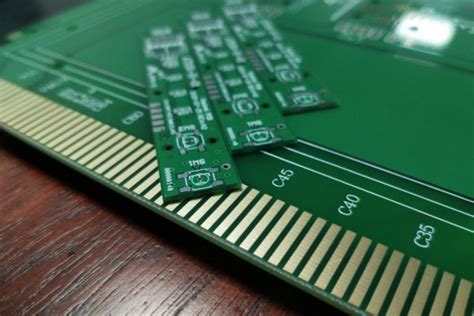
Avoid Common PCB Prototype Delays
Even minor oversights in PCB manufacturing workflows can lead to costly delays, derailing tight development schedules. One critical pitfall involves design inconsistencies – mismatched layer counts or unclear drill files often trigger back-and-forth revisions with PCB manufacturing companies. To prevent this, run automated Design Rule Checks (DRCs) and cross-verify Gerber files against your CAD software’s output.
Material selection errors account for 23% of prototype holdups, according to industry surveys. Confirm substrate specifications (e.g., FR-4 vs. high-frequency laminates) and surface finishes before submitting orders. Reputable PCB manufacturing business providers typically flag incompatibilities, but proactive verification avoids 48-hour requoting cycles.
Timeline bottlenecks also arise from poor supply chain coordination. When ordering specialized components through your manufacturer, verify lead times for ICs or connectors – shortages here can stall production despite fast PCB manufacturing cost-optimized processes. Consider pre-approved alternate parts lists to maintain flexibility.
Approval delays frequently occur when internal stakeholders overlook manufacturing constraints. Implement a collaborative review system where engineering and procurement teams align on tolerances, testing protocols, and compliance requirements upfront. This reduces last-minute spec changes that reset the production clock.
Finally, leverage real-time tracking tools offered by advanced PCB manufacturing partners. Automated dashboards highlighting milestones like panelization completion or copper plating stages let you anticipate and address delays before they impact delivery dates. By addressing these pain points systematically, you transform prototype cycles from unpredictable waits into predictable, accelerated processes.
Accelerate Electronics Development Cycles
To accelerate electronics development cycles, you need to align PCB manufacturing workflows with iterative design phases. Leading PCB manufacturing companies now integrate real-time quoting engines that analyze PCB manufacturing cost variables—layer count, material selection, and surface finish—to provide instant budgetary feedback. This eliminates back-and-forth communication, allowing you to allocate resources toward critical path tasks like circuit validation or firmware testing.
When preparing files for prototype orders, adopt standardized design rules (IPC-2221/Class 2) to avoid manufacturing holds. Advanced PCB manufacturing business platforms automatically flag mismatches in drill-to-copper ratios or solder mask clearances, reducing revision cycles by up to 48%. Pair this with panelization tools that optimize material yield, ensuring cost predictability even for high-mix, low-volume batches.
Leverage automated tracking dashboards offered by full-service manufacturers to monitor fabrication milestones. Real-time updates on etching, lamination, and electrical testing phases let you proactively adjust downstream assembly schedules. For instance, if a 6-layer rigid-flex PCB enters final inspection ahead of schedule, you can fast-track component procurement to shave days off your timeline.
By synchronizing PCB manufacturing timelines with parallel development processes—such as enclosure design or compliance testing—you create a resilient product launch strategy. This approach not only compresses time-to-market but also builds flexibility to accommodate last-minute design tweaks without derailing deliverables.
Conclusion
By integrating strategic approaches with modern PCB manufacturing solutions, you can significantly reduce development timelines while maintaining rigorous quality standards. The key lies in selecting PCB manufacturing companies that align with your project’s technical requirements and turnaround expectations. Prioritize suppliers offering transparent PCB manufacturing cost structures, as this ensures predictability and avoids budget overruns during iterative prototyping phases.
Leveraging automated tools for design validation and real-time order tracking minimizes human error and accelerates approval workflows. For instance, partnering with a PCB manufacturing business equipped with AI-driven quoting systems allows you to refine specifications dynamically, optimizing material usage and layer configurations before production begins. Remember, even minor adjustments in panelization or surface finishes can yield substantial cost savings without compromising performance.
To sustain momentum, adopt a proactive stance in communication. Clarify tolerances, testing protocols, and delivery milestones upfront to eliminate ambiguity. This not only streamlines interactions with manufacturers but also safeguards against delays caused by revision cycles. By mastering these principles, you transform PCB manufacturing from a logistical challenge into a competitive advantage, ensuring your electronics projects progress from concept to functional prototype with unprecedented efficiency.
The journey from design files to physical boards becomes seamless when you combine technical preparedness with collaborative partnerships. As the industry evolves, staying informed about emerging technologies—such as advanced substrate materials or cloud-based collaboration platforms—will further enhance your ability to navigate PCB manufacturing cost variables and delivery timelines. Ultimately, this holistic approach empowers you to meet aggressive development schedules while maintaining the flexibility to adapt to evolving project demands.
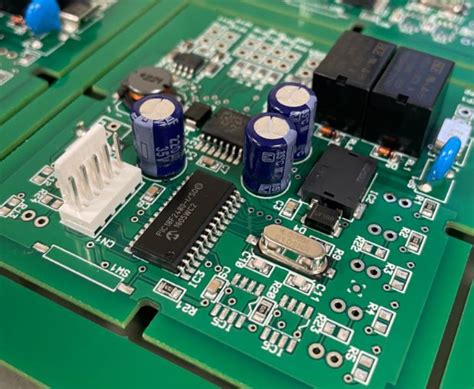
Frequently Asked Questions
How do PCB manufacturing companies ensure fast prototype turnaround?
Reputable providers maintain dedicated prototype lines with optimized workflows. You’ll want to verify their real-time capacity monitoring systems and whether they offer expedited engineering reviews. Many specialists achieve 24-hour delivery through parallel processing of design validation and material preparation.
What factors most impact PCB manufacturing cost for prototypes?
Three key elements dominate pricing: panel utilization rates, material selection (standard FR-4 vs. high-frequency substrates), and layer count complexity. Smart designers reduce expenses by avoiding oversized boards and specifying standard finishes unless absolutely necessary. Always request breakdowns of setup fees versus per-unit costs.
Can I get same-day quotes for prototype PCB orders?
Leading PCB manufacturing business operations now provide instant quoting engines that analyze your Gerber files within minutes. These systems evaluate 15+ technical parameters – from minimum trace widths to via structures – to generate accurate estimates without human intervention.
How should I prepare files to prevent PCB manufacturing delays?
Use IPC-2581 or ODB++ formats for comprehensive data transfer, including your drill charts and layer stackup details. Double-check that all apertures are properly defined in your aperture list. Many companies offer free design-for-manufacturability checks – take advantage of these pre-production verification tools.
What tracking options exist during prototype production?
Modern PCB manufacturing companies provide granular visibility through customer portals showing real-time status updates. Look for automated alerts at critical milestones: material cutting, imaging completion, electrical testing, and shipping. Some providers even integrate IoT sensors for shipment location tracking.
Ready to Start Your Project?
Please click here to access instant quoting and dedicated engineering support for your next prototype order. Our team specializes in accelerating development cycles while maintaining rigorous quality standards.



